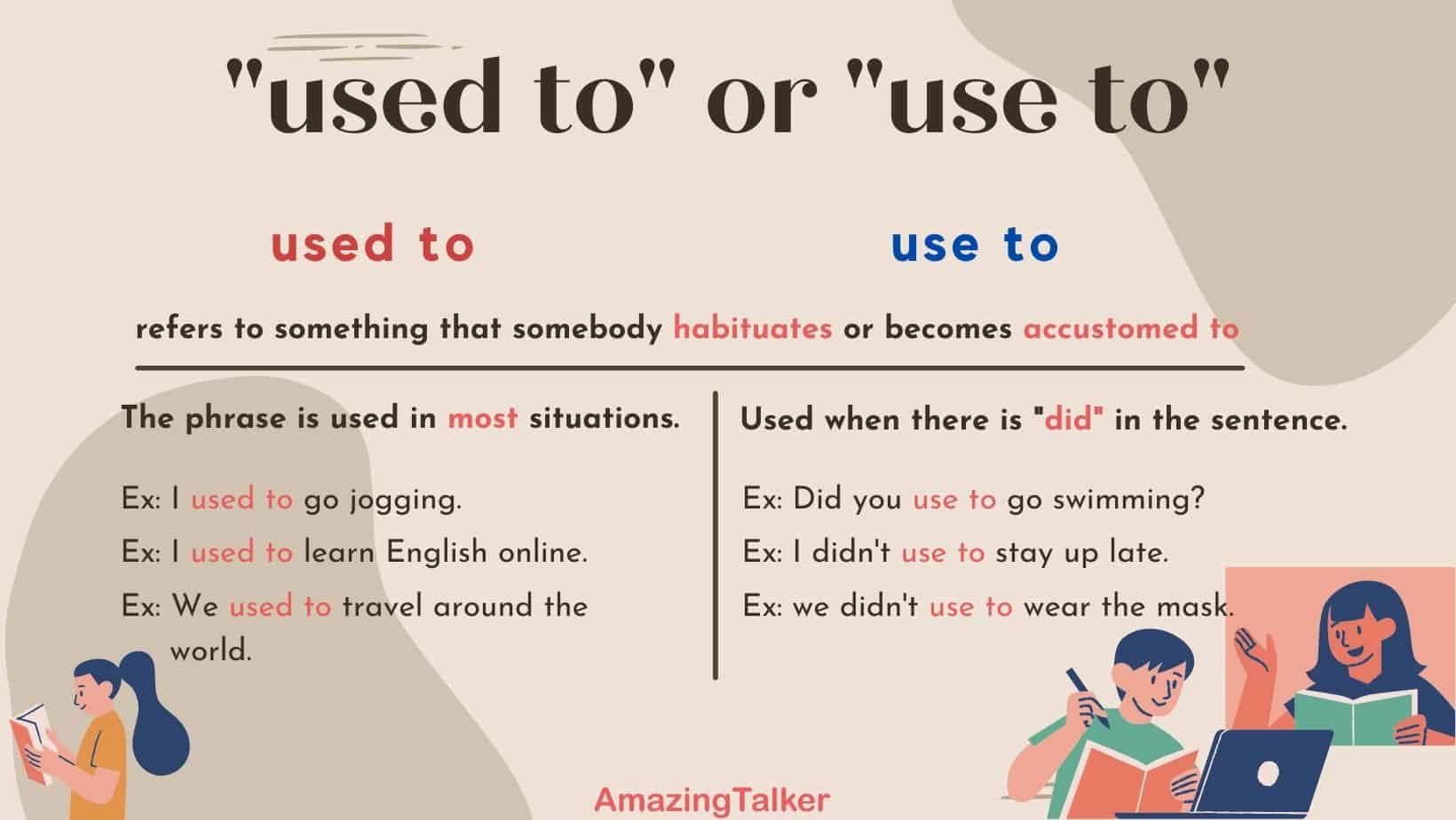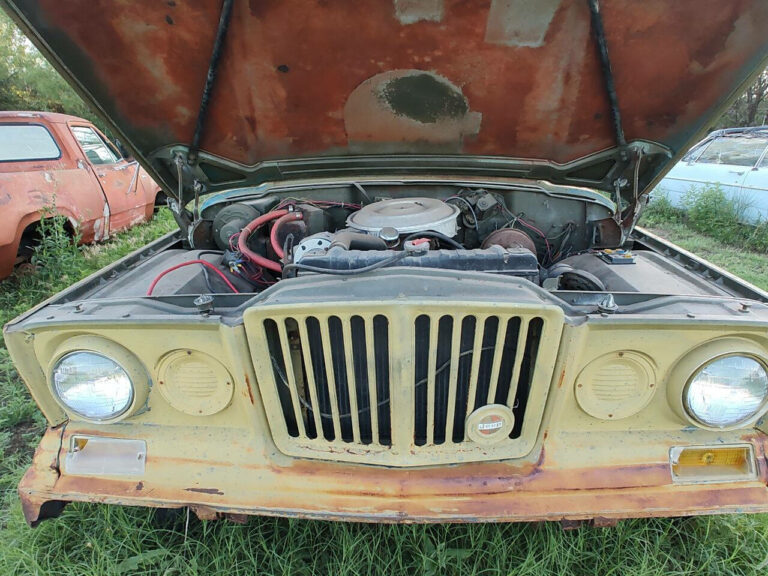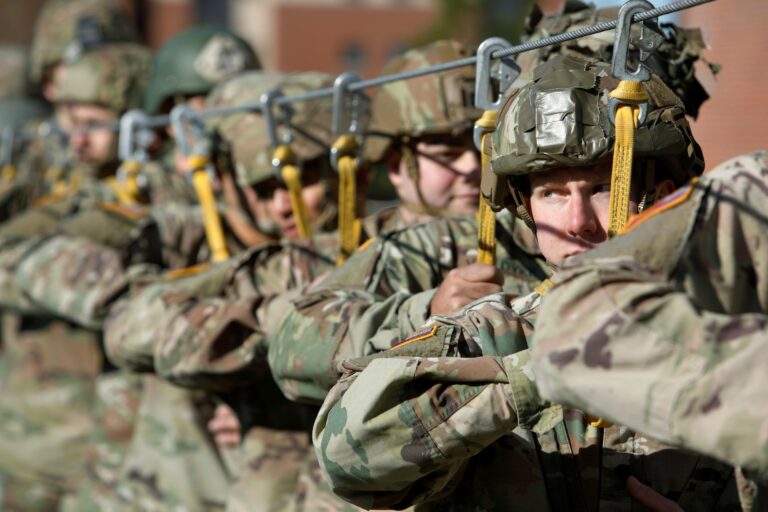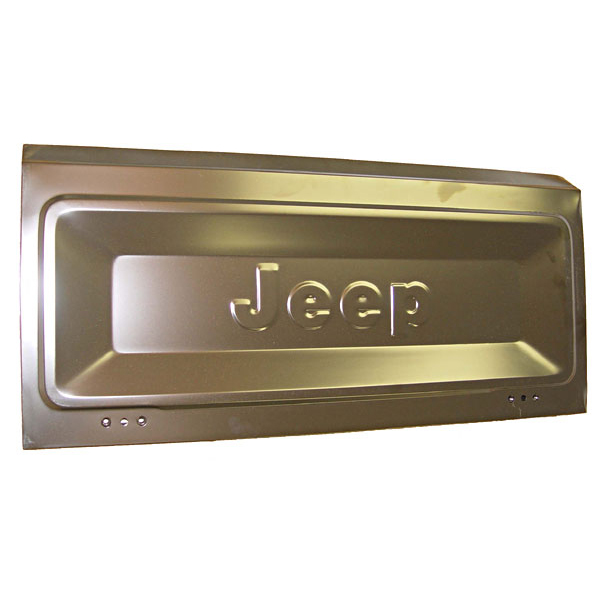Used 2004 Jeep Grand Cherokee For Sale: Your Comprehensive Buyer’s Guide
Used 2004 Jeep Grand Cherokee For Sale: Your Comprehensive Buyer’s Guide /jeeps.truckstrend.com
In the ever-evolving landscape of automotive technology, some vehicles simply refuse to fade into obscurity. The 2004 Jeep Grand Cherokee (WJ generation) is one such icon, continuing to capture the attention of buyers seeking a blend of rugged capability, surprising comfort, and remarkable value. For those considering a Used 2004 Jeep Grand Cherokee For Sale, this article serves as an indispensable guide, navigating you through its enduring appeal, what to look for, and how to make an informed purchase.
The 2004 Grand Cherokee represents the tail end of the beloved WJ generation, known for its robust construction, classic Jeep styling, and legendary off-road prowess. It’s a vehicle that embodies the spirit of adventure while offering enough practicality for daily family duties. However, like any used vehicle approaching two decades old, a thorough understanding of its strengths, weaknesses, and maintenance requirements is crucial for a satisfying ownership experience. This guide will equip you with the knowledge needed to confidently assess a Used 2004 Jeep Grand Cherokee For Sale and determine if it’s the right choice for your next adventure.
Used 2004 Jeep Grand Cherokee For Sale: Your Comprehensive Buyer’s Guide
I. Why Consider a Used 2004 Jeep Grand Cherokee?
The decision to purchase a Used 2004 Jeep Grand Cherokee For Sale often boils down to a compelling combination of factors that modern SUVs simply can’t match at a comparable price point.
- Affordability and Value: Perhaps the most significant draw is the price. A 2004 Grand Cherokee offers substantial capability and features for a fraction of the cost of a new vehicle. It’s an excellent option for budget-conscious buyers who still demand a lot from their SUV.
- Legendary Capability: At its heart, it’s a Jeep. The 2004 Grand Cherokee comes with some of the most respected 4×4 systems of its time, including Quadra-Trac I (full-time 4WD), Quadra-Trac II (active full-time 4WD with low range), and the highly advanced Quadra-Drive (adds front and rear vari-lok differentials for ultimate traction). These systems make it incredibly competent off-road, far surpassing many contemporary crossovers.
- Engine Options: The 2004 model year offered a choice of two robust engines:
- 4.0L Inline-Six (I6): A workhorse of an engine, renowned for its simplicity, reliability (if maintained), and abundant low-end torque. It’s a favorite among Jeep enthusiasts for its durability.
- 4.7L PowerTech V8: This engine offered more horsepower and torque, providing smoother acceleration and better towing capacity. For the top-tier Overland trim, a High Output (H.O.) version of the 4.7L V8 was available, boasting even more power.

- Durability and Simplicity: The WJ platform is known for its robust, body-on-frame-like construction (unibody with integrated frame rails), which contributes to its solid feel and durability. Its mechanical simplicity compared to newer, more complex vehicles can also translate to lower repair costs for DIY enthusiasts or independent mechanics.
- Versatility: Whether you need a daily commuter, a family hauler with decent cargo space, or a weekend warrior for light to moderate off-roading, the 2004 Grand Cherokee can wear many hats. Its comfortable interior, combined with its rugged exterior, makes it a truly versatile choice.
II. Key Features and Trims of the 2004 Grand Cherokee (WJ Generation)
Understanding the different trim levels and features is essential when evaluating a Used 2004 Jeep Grand Cherokee For Sale, as they significantly impact the vehicle’s capabilities, comfort, and ultimately, its value.
- Laredo: The base trim, but by no means basic. Laredo models typically came with cloth upholstery, manual climate control, power windows and locks, and a decent audio system. They were available with both the 4.0L I6 and 4.7L V8, and all three 4×4 systems.
- Limited: A step up in luxury, the Limited added features like leather upholstery, automatic climate control, power-adjustable front seats, premium sound systems, and often came standard with the 4.7L V8 and more advanced 4×4 systems like Quadra-Trac II or Quadra-Drive. Exterior chrome accents and alloy wheels distinguished it.
- Overland: The pinnacle of the 2004 Grand Cherokee lineup. The Overland featured the High Output (H.O.) 4.7L V8 as standard, along with Quadra-Drive 4×4, unique leather and suede interior trim, heated seats, woodgrain accents, and a sunroof. It represented the most luxurious and capable factory offering.
- Special Editions: Occasionally, you might encounter special editions like the Columbia Edition (often with unique interior accents and roof rack) or Freedom Edition, which added specific visual packages and sometimes unique wheels.
All trims offered a comfortable ride for their class, decent interior space for five passengers, and respectable cargo capacity, especially with the rear seats folded down.
III. What to Look for When Buying a Used 2004 Grand Cherokee: An Inspection Guide
Purchasing a Used 2004 Jeep Grand Cherokee For Sale requires a keen eye and a systematic approach. A thorough inspection is paramount to avoid costly surprises down the road.
-
Mechanical Inspection (The Heart of the Vehicle):
- Engine:
- 4.0L I6: Listen for any knocking or ticking. Check for oil leaks, especially around the valve cover and the notoriously common rear main seal. While common, excessive leaks indicate neglect. Check for exhaust manifold cracks (a common issue, leading to ticking noises).
- 4.7L V8: Listen for lifter tick, particularly on cold starts. Check for coolant leaks and signs of overheating. Ensure the engine runs smoothly without misfires.
- General: Check the coolant reservoir for sludge or oil contamination. Inspect belts and hoses for cracks or wear.
- Transmission: Test drive to ensure smooth shifts in all gears, both up and down. Listen for clunks or harsh engagement. Check the transmission fluid level and color (should be reddish, not dark brown or black).
- Transfer Case: Engage 4WD (if applicable) in a safe area. Listen for grinding or clunking noises. Check for fluid leaks around the transfer case. Ensure the 4WD selector works correctly.
- Suspension: Drive over bumps and rough roads. Listen for clunks, squeaks, or rattles. Inspect ball joints, tie rods, control arm bushings, and shocks/struts for wear, tears, or leaks. Uneven tire wear can indicate suspension issues.
- Brakes: Check for pulsating when braking (warped rotors) or excessive squealing. Test the parking brake.
- Steering: Check for excessive play in the steering wheel. Listen for groaning noises from the power steering pump.
- Exhaust: Look for excessive rust, holes, or loose components.
- Engine:
-
Electrical System:
- Test all lights (headlights, tail lights, turn signals, brake lights, interior lights).
- Operate all power windows, locks, and mirrors.
- Test the radio, HVAC system (ensure all fan speeds and temperature controls work), and sunroof (if equipped).
- Crucially, check for any illuminated warning lights on the dashboard (Check Engine Light, ABS, Airbag, Brake, etc.). A Check Engine Light often indicates a fault that needs immediate attention.
-
Body and Frame:
- Rust: This is a major concern, especially in regions that use road salt. Pay close attention to rocker panels, wheel wells, door bottoms, tailgate, and especially the frame rails and suspension mounting points. Surface rust is common, but through-rust is a deal-breaker.
- Accident Damage: Look for inconsistent panel gaps, mismatched paint, or ripples in the bodywork, which can indicate previous collision repairs.
- Glass: Check for cracks or chips in the windshield and other windows.
- Tires: Inspect tread depth and ensure even wear. Uneven wear can point to alignment or suspension issues.
-
Interior Condition:
- Check for rips, tears, or excessive wear on seats, carpets, and headliner.
- Inspect the dashboard for cracks (common in older vehicles, especially where exposed to sun).
- Test all seat belts.
- Look for signs of water leaks, such as damp carpets or mildew smell, especially around the sunroof or door seals.
-
Documentation and History:
- Service Records: Ask for maintenance history. A well-documented vehicle suggests a caring owner.
- Ensure the title is clean (not salvage, rebuilt, or flood-damaged).
- Vehicle History Report (CarFax/AutoCheck): This report is invaluable for revealing accident history, previous owners, service history, and odometer discrepancies.
IV. Common Issues and Maintenance Tips for the 2004 Grand Cherokee
While generally robust, certain issues are more prevalent in the WJ generation. Being aware of these can help you budget for potential repairs.
- Blend Doors (HVAC): A very common issue where the plastic doors inside the HVAC system break, leading to no heat or AC on one side of the cabin. Repair can be labor-intensive.
- Window Regulators: The power window regulators are known to fail, causing windows to fall into the door or operate slowly.
- 4.0L I6 Engine Leaks: Rear main seal and valve cover gasket leaks are very common. While not always critical, they can be messy and require attention.
- 4.7L V8 Lifter Tick: Often more of an annoyance than a critical failure, but persistent ticking can indicate worn lifters or inadequate oil pressure. Regular, quality oil changes are key.
- Transfer Case Issues: On Quadra-Trac II and Quadra-Drive systems, the viscous coupler can wear out, leading to binding in turns. Quadra-Drive’s vari-lok differentials require specific fluid.
- Suspension Components: Ball joints, control arm bushings, and tie rods are wear items and will likely need replacement if not already done.
- Radiator/Cooling System: Like any older vehicle, hoses, radiator, and water pump can degrade. Overheating is a serious concern for any engine.
Maintenance Tips:
- Regular Fluid Changes: Adhere to or exceed recommended intervals for engine oil, transmission fluid, differential fluid, and especially transfer case fluid.
- Coolant Flushes: Keep the cooling system fresh to prevent overheating and corrosion.
- Grease Zerk Fittings: Many suspension and steering components have grease fittings; regular lubrication extends their life.
- Address Leaks Promptly: Don’t ignore oil or fluid leaks; they can lead to bigger problems.
V. Pricing and Value Considerations for a Used 2004 Jeep Grand Cherokee For Sale
The price of a Used 2004 Jeep Grand Cherokee For Sale can vary significantly based on several factors:
- Condition: This is the most significant determinant. A well-maintained, rust-free example will command a higher price.
- Mileage: Lower mileage typically means a higher price, though condition and maintenance history are often more important than just the number on the odometer.
- Trim Level: Overland models will be more expensive than Limited, which in turn are pricier than Laredo.
- Engine: The 4.7L V8 (especially H.O.) might fetch a bit more than the 4.0L I6 due to higher performance.
- 4×4 System: Vehicles with Quadra-Drive usually have a higher value due to their enhanced capability.
- Geographical Location: Prices can fluctuate based on local demand and supply.
Estimated Price Range for a Used 2004 Jeep Grand Cherokee For Sale:
| Condition | Engine Type | Trim Level | Estimated Price Range (USD) | Notes |
|---|---|---|---|---|
| Poor | 4.0L I6 | Laredo | $1,500 – $2,500 | Significant mechanical issues, heavy rust, needs major work. |
| Fair | 4.0L I6 | Laredo | $2,500 – $4,000 | Some mechanical issues, moderate rust, cosmetic flaws. |
| Fair | 4.7L V8 | Limited | $3,000 – $5,000 | Drivable, but needs repairs/maintenance. |
| Good | 4.0L I6 | Laredo | $4,000 – $6,000 | Minor issues, well-maintained, light wear. |
| Good | 4.7L V8 | Limited | $5,000 – $7,500 | Solid runner, few issues, good cosmetic condition. |
| Excellent | 4.7L H.O. V8 | Overland | $7,500 – $10,000+ | Meticulously maintained, low mileage, minimal flaws. |
- Note: These are estimates and can vary based on market conditions, specific features, and regional demand.
Negotiation Tips:
- Be Prepared: Know the market value for similar vehicles in your area.
- Point Out Flaws: Use any identified issues (cosmetic or mechanical) as leverage for negotiation.
- Factor in Repairs: If you anticipate needing to replace specific components soon, factor those costs into your offer.
- Don’t Be Afraid to Walk Away: There are many Used 2004 Jeep Grand Cherokee For Sale; patience is key to finding the right one.
VI. Practical Advice and Actionable Insights
- Get a Pre-Purchase Inspection (PPI): This is the single most important piece of advice. Spend $100-$200 to have a trusted independent mechanic (ideally one familiar with Jeeps) inspect the vehicle thoroughly. They can spot issues you might miss and provide a detailed report.
- Test Drive Extensively: Drive on different road types – city, highway, and if possible, some rough terrain to test the 4WD. Listen for noises, feel for vibrations, and test all functions.
- Factor in Future Costs: Remember that buying an older vehicle means potential for more frequent maintenance and repairs. Set aside a contingency fund.
- Insurance: Get insurance quotes before buying, as rates can vary depending on the vehicle and your driving history.
VII. Frequently Asked Questions (FAQ) About the Used 2004 Jeep Grand Cherokee
Q1: Is the 2004 Jeep Grand Cherokee reliable?
A1: Generally, yes, if well-maintained. The 4.0L I6 engine is particularly known for its longevity. However, like any vehicle of its age, it will require regular maintenance and may develop common age-related issues. A pre-purchase inspection is crucial.
Q2: Which engine is better, the 4.0L I6 or the 4.7L V8?
A2: It depends on your priorities. The 4.0L I6 is renowned for its extreme durability and simplicity, often going hundreds of thousands of miles with proper care. The 4.7L V8 offers more power and smoother acceleration, better for towing. The 4.0L is generally easier and cheaper to maintain.
Q3: What’s the difference between Quadra-Trac and Quadra-Drive?
A3: Quadra-Trac I is a basic full-time 4WD system. Quadra-Trac II adds a low-range transfer case and an active clutch pack for better traction distribution. Quadra-Drive is the most advanced, adding Vari-Lok progressive locking differentials to both the front and rear axles, providing superior traction in extreme low-traction situations.
Q4: Are parts still available for the 2004 Grand Cherokee?
A4: Yes, parts are generally readily available. The WJ generation was very popular, and many aftermarket and OEM parts can still be sourced through dealerships, auto parts stores, and online retailers.
Q5: How much does insurance cost for a 2004 Grand Cherokee?
A5: Insurance costs vary widely based on your location, driving record, coverage type, and the specific vehicle. As an older SUV, it might be cheaper to insure than a newer model, but it’s best to get quotes from multiple providers.
Q6: Is it good for off-roading?
A6: Absolutely. The 2004 Grand Cherokee, especially those equipped with Quadra-Trac II or Quadra-Drive, is highly capable off-road. Its solid axles (front and rear) and robust construction make it a favorite for moderate to serious trail use.
Q7: What’s the typical fuel economy?
A7: Fuel economy is not its strongest suit. Expect around 15-18 MPG combined for the 4.0L I6 and 13-16 MPG combined for the 4.7L V8, depending on driving conditions and maintenance.
Conclusion
A Used 2004 Jeep Grand Cherokee For Sale offers a unique proposition in today’s market: an affordable, capable, and versatile SUV with a strong legacy. While it demands careful inspection and a realistic understanding of potential maintenance, a well-chosen WJ can provide years of reliable service and countless adventures. By following the comprehensive advice in this guide, you can confidently navigate the buying process, uncover a hidden gem, and embrace the enduring spirit of the Jeep Grand Cherokee. For those who value rugged utility and classic design over cutting-edge tech, the 2004 Grand Cherokee remains a compelling and worthwhile investment.





